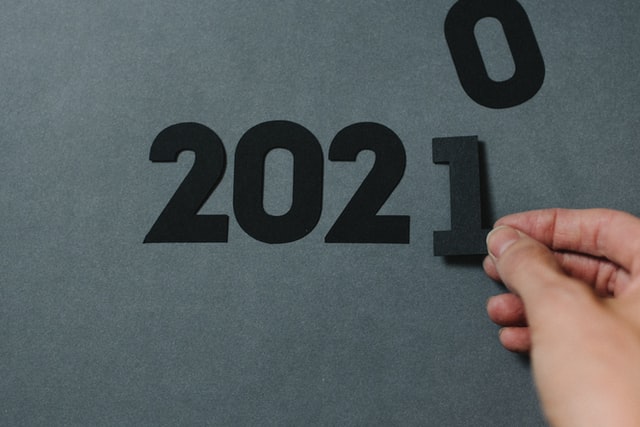Come October, you start seeing them: postcards and fat envelopes from charities reminding you of those less fortunate and the tough times ahead during the upcoming holiday season — the meals they’ll do without, the gifts they can’t provide their kids, the coats they need to stay warm. You’ll see these appeals begin popping up in your inbox, too, especially if you’ve donated to those organizations in the past. Your social media feeds will likely echo similar requests for aid, particularly during the #GivingTuesday that follows Cyber Monday.
Combined with the charitable mindset that the holiday season encourages, these messages find a more receptive audience, which is why year-end fundraising is so important to nonprofits. In fact, according to Winspire, an experiential agency for charity auctions, 50 percent of nonprofits receive the bulk of their donation revenue in the last three months of the year. December is especially significant, with more than a third of annual giving occurring that month — indeed, 52 percent of first-time donors who contribute in December give larger gifts than those who donate at any other time of the year. This generosity is further concentrated, with 10 percent of annual giving occurring on the last three days of the year (hi, tax write-offs!).
No wonder, then, that nonprofits put so much emphasis on their year-end fundraising, which is why we’ve created this guide to assist organizations looking to improve their efforts or reboot their approach towards year-end giving. Whether your nonprofit has a tried-and-true process or whether you’re just beginning to think about your year-end fundraising, there’s something here for everyone, with tips and tricks for organizations large and small, established or newly minted. Shall we begin?
Phase 1: Evaluate & Plan

You want to give yourself plenty of time to not only plan your year-end fundraising, but also to develop all the assets you’ll need for it: copy for your email appeals, time to get digital files to the printer for your mailers, and so on. While about 52 percent of nonprofits begin to plan in October, it’s never too late (or too early) to start.
Set yourself up for success by first assessing your previous year-end fundraising efforts. Doing so will give you benchmarks against which you can compare the strategies and tactics you take this year against past years and the results that each yielded. It will also identify any holes in your data collection so that you can patch those up and begin gathering the information you need to bolster your fundraising.
What exactly do you need to know? Here’s a common list of data you should compile:
- Who gives where? Looking at the numbers year over year, determine your donors by channel: direct mail, event, text, social media, direct mail, in-person visit.
- Number of new donors acquired year over year
- Number of donors lost year over year
- Average gift size year over year
- The increase or decrease in average gift size year over year
- Total dollars raised year over year
- The rise in overall growth percentage year over year
These figures and data will likely inform not just your year-end fundraising, but other initiatives too, so if you haven’t been gathering this information already, pat yourself on the back for harvesting it now.
Digging Deeper: Segmenting Your Donors
While you’ve done the hard work of learning the channels in which your donors have best responded, there’s more to be done. Remember, many of us have become accustomed to personalized outreach and services. Whether that’s online retailers who remember your past purchases or streaming services such as Spotify and Netflix that suggest content tailored to your tastes, we now expect services to cater to us individually. It’s no different with the charities and causes we support.
And with the flood of emails and marketing from merchants and other nonprofits that yours competes with during the holiday season, why not stand out from the rest by addressing each donor or potential donor personally? Let’s look at the ways you can do that.
- Segment by communication preference. You already did a bit of this splicing when you researched past donors and the touchpoint through which they contributed. Now parse that data even finer by segmenting them by their preferred communication channel, as well as the frequency — daily, weekly, monthly — by which they like to hear from you.
- Segment by giving level. Group individuals by the ways they interact with your organization: non-donors, volunteers, general fund, mid-level, major donors, etc. Shape your communications to their specific contributions.
- Segment by interests. Which programs do your donors contribute to or participate in? For example, a social service agency may have a homeless outreach program or coordinate a meals-on-wheels for the elderly. Or an animal-welfare organization may find volunteers lean towards cats versus dogs. By understanding your donors’ or prospective donors’ giving affinity, you can align their passion with the needs of your organization.
- Segment by giving frequency. One-time, annual, or recurring — your supporters have different giving preferences. Customize your communications to speak to (and potentially upgrade) their selections.
By segmenting your donors in these categories, you can offer them a more personalized experience and show that you’re listening and value their unique contributions.
Setting Goals

Armed to the teeth with data, you can now set milestones for your year-end fundraising and have those map to larger organizational goals. For instance,
Once you’ve established your goals, you’ll want to figure out how you’ll measure your progress. Do you need to set up special formulas for your spreadsheets or databases? Do you need to purchase specialized software? Whose responsibility will it be to track that information?
Next, look into what drives donations (last-minute or otherwise) and incorporate that into your plans. For example, should you change the color of your donate buttons? Some studies say certain colors drive greater engagement.
What about your emails’ subject lines? Is there language that’s been shown to prompt action? Research industry findings to see what’s best for your field because what works for major retailers may not be suitable for your organization or audience.
Lastly, develop “reach” or challenge goals for your team. Incentives such as a gift card to a local shop or a team dinner at a favorite restaurant can provide extra motivation as well as fuel momentum.
Consider applying this tactic to fundraising communications to would-be donors as well. For example, you could establish a gift-match campaign and remind donors of the limited time in which they can have their gift doubled or tripled. (Washington National Cathedral did this and raised double its goal.) You might also launch this effort during #GivingTuesday to increase your chances of reaching that challenge milestone.
The All-Important Communications Plan
You know the results of your past year-end giving efforts, you’ve set goals for this year, and you’ve figured out how you’re going to measure your progress towards them. Now how do you plan to convince past donors to give again (and at higher amounts or greater frequency) and potential supporters to contribute?
A thoughtful, well-designed communications plan is your ticket. Drawing donors in means helping them understand the beating heart of your organization. Too often, communications to them fail to adequately engage their passion for the causes your organization champions.
And while your nonprofit may be doing the championing, remember that donors should be the hero of your fundraising story. Elevate their contributions and use the insights you gained from segmenting your file to tell a story that puts donors at the center.
How to Create a Compelling Story

Charitable giving is inherently altruistic, but focusing on donors’ interests goes a long way towards getting them there. By segmenting your file, you have a better sense of what compels your audience and can shape your communications around that data. For instance, if you know a donor has kids, you can tell a story about how their donation will support your organization’s after-school program for at-risk youth. By building campaigns around experiences that relate directly to donors’ lives and interests, you can produce meaningful stories that stir emotions and compel your audience to act.
Some donors may be more data-driven or require proof that their dollars will be effective. Provide specifics on how their donations support your organization’s work, such as the number of houses their donations helped build or the number of cancer patients treated at your hospital. When given such hard data, donors are reassured that their contributions have meaning — they may even be inspired to give more!
At the start of your campaign, you’ll want to focus your year-end fundraising communications on the organization’s mission but build a sense of urgency as the clock ticks down on the year. FamilyLife took that tack and saw a 10 percent bump in the number of donors and an 8 percent lift in revenue year over year.
Ready, Set, Go!
You compiled the needed data and devised a communications plan — you’re ready to act, right? Not so fast. You’ll want to confirm that all the tools and relationships you need are in place before moving forward.
Take tools, for instance. Earlier we mentioned ensuring that you had the right software to organize existing data and to track new data as it comes in. You should also have a tool that provides your nonprofit with in-depth profiles of your supporters so that you can quickly segment them in the ways we described above. Pursuant’s GivingDNA is the only tool on the market that does that. From the donation history of your constituents to their professional and educational backgrounds, the GivingDNA platform can optimize your year-end fundraising.
You should also consider marketing automation tools that facilitate rapid responses to donor engagement, such as personalized thank-you emails that automatically deploy when a constituent makes a donation. Remember, too, that many digital tools and platforms offer discounted rates to nonprofits.
Next you’ll want to make sure that the right relationships have been established. Besides selecting the vendors who may shoot your campaign video or write your email copy, you should research the social influencers interested in your cause or mission. Sometimes that can be a well-known celebrity with a large Instagram following; at other times, it can be a nano influencer with a smaller but highly engaged following. Occasionally, it can be another organization with an audience or mission related to or adjacent to yours. Relationships with these social media influencers or partners can prove highly beneficial so reach out to them and begin building rapport well before you plan to launch your campaign. No one likes to feel as though the relationship is purely transactional.
Phase 2: Implementation & Execution

Data, a communications roadmap, tools, partnerships — check, check, check, and check. Congratulations! You’re now ready to act on your plans.
Your first step should focus on building a pre-launch buzz. In the weeks leading up to your campaign, you can stoke excitement and awareness by activating partnerships via social media, blog posts, or other channels. For example, you might reach new audiences by drafting pre-written and designed content that partners or influencers can share on social media. You can also send postcards with personalized URLs that allow you to track recipients’ jump to online, where you can more easily capture their donor-stewardship information. Naturally, you’ll also want to create a parallel promotional track online with e-blasts that raise awareness and let your audience know to expect messages from you in the weeks ahead.
The Turn to Digital
The postcards with personalized URLs and the e-blasts you’re deploying all lead to the same endpoint: your website. While phone calls (and, increasingly, SMS text messages) and direct mail continue to be important avenues for many nonprofits’ year-end fundraising, donations made digitally are rising in importance, especially as organizations look to attract younger, more digitally savvy donors.
As a result, you’ll want to have your web presence locked down ahead of launch. For instance, you might want to create a temporary homepage takeover with a pop-up announcing your campaign. It could include a live countdown to the end of the year to emphasize the campaign’s urgency, or it could display a leaderboard of donations made thus far. (Keep in mind that you might not want to feature the leaderboard until it can display a respectable sum.)
Your site should also feature a can’t-miss donate button in a prominent location — at the top of your homepage perhaps — and you should test it regularly. Tech glitches are a distinct possibility, so you want to be sure the path to donation is smooth and error-free. Same goes for any sign-up forms that allow you to capture site visitors’ email addresses.
In addition, you’ll want to ensure that the homepage, donation forms, and copy align with the overall theme of your campaign and, if you have the budget, think about running ads on social or print media to drive traffic to your site. Because the pandemic brought QR codes into wider use, you can add them to print media, be it an ad or mailer, to move constituents online and help you better track the efficacy of different touchpoints.
Of course, once visitors are on your site, there should be content that piques their interest. What would motivate or inspire them to engage with your mission or organization if they knew nothing about it? This is an opportunity to get creative and prepare content that, if you’re lucky, goes viral. Instead of a white paper or video filled with talking heads, maybe you develop a social gaming campaign, online quiz, or augmented reality storyline.
Be careful not to produce anything too burdensome, though. If your content is time consuming or arduous, your audience may become frustrated and opt out.
That behavior can be easily tracked, however, via analytics like bounce rates and time on page. The ability to study constituents’ online behavior allows nonprofits to A/B test a variety of messages, content, designs, etc., as well as to quickly adjust tactics and strategies that may not yield the expected results. For instance, if your email campaigns don’t have satisfactory open rates, A/B test your subject lines or design. (Remember, though, to test a single element like the color of your button, not its size and placement simultaneously, because if you have more than one variable, you won’t know which element is influencing the results.) Monitoring your analytics throughout the campaign means you can assess your efforts in real time and pivot as needed to achieve your goals.
In fact, many of the communications channels now open to nonprofits have analytics capabilities that allow you to evaluate their performance as fundraising pathways. Integrating the channels also gives your donors and prospective donors the chance to choose their preferred giving method. For instance, by including links from your direct mail campaigns to online donation pages, you give constituents multiple avenues for learning about, exploring, and hopefully contributing to your mission. The data you glean will tell you which channels have the most traction and, thus, where you should concentrate your efforts.
Phase 3: Analysis & Next Steps

The holidays can be a busy time both professionally and personally, so you and your teammates may be tempted to slow-walk an evaluation of your year-end fundraising after it ends, but don’t put it off for too long. You want to conduct your analysis while the campaign is still fresh in your mind, so you might want to schedule a debriefing in advance to ensure it’s on everyone’s calendars soon after the campaign ends.
The debriefing should be attended by all affected stakeholders, such as your development team, communications staff, and analytics department. The latter will most likely present the results of your year-end fundraising, which will be based on the metrics — targeted revenue, number of new donors, etc. — agreed upon at the outset of the campaign.
Yet, while they form the basis of the campaign, the results aren’t the only topics to discuss. How did your chosen tools perform? Did you have enough staff assigned to the effort? What procedural changes could improve next year’s fundraising, and are there lessons from the most recent effort that could be applied to fundraising initiatives at other points throughout the year?
If your year-end fundraising ends on a high note, trumpet the results publicly to further engage donors. Share in the success of your year-end giving together and communicate an immediate win that suggests wide constituent support and approval.
Convert Year-End Donors Into Lifelong Supporters

You don’t have to wait another twelve months to engage your year-end donors. Their contributions can propel your next outreach; in fact, you can plan to tack on several weeks of communications after the holiday season. For new donors, for example, you can send a series of emails that welcome them to the organization, introduce its various programs, invite them to volunteer, and so on — there’s plenty of content to mine, and if they donate again, you can tag them to receive regular updates and touches. Note, too, if there was a particular area of service — an email about your beach clean-up activities, say, or your financial literacy workshops — that prompted their donation because it helps round out your profile of who they are and what compels their generosity.
For your most faithful donors, send communications that keep them inspired by your story. Share updates of the impact your programs have had on issues or communities they care about, for example. And if you need to request additional support, seek a monthly sustaining gift.
Your efforts will be best boosted by an analytics platform like GivingDNA, which sheds light on donors’ and constituents’ past giving patterns. It also acts as a valuable source of information for how you might reach both potential and existing donors, as well as what you can ask. Schedule a demo today to learn how your fundraising may be best supported by Pursuant’s GivingDNA platform and the agency’s array of additional services.
Additional Resources
Ensure the success of your year-end fundraising with these free resources from Pursuant.
- Demystifying Donor-Centric Fundraising: Acquire and engage donors with an intentional experience before making an ask.
- 5 Questions You Must Ask Before Sending Copy to Your Donors: Present a timely and relevant case for support for every donor.
- Rise Above the Noise Infographic: rive momentum toward a strong finish for your campaign.
- Relationship Fundraising Pocket Guide: “The Donor Journey”
- The Ultimate Countdown to Year-End Giving
- Donor Loyalty Benchmarking Study: Quickly connect donors to impact and results post-campaign.

